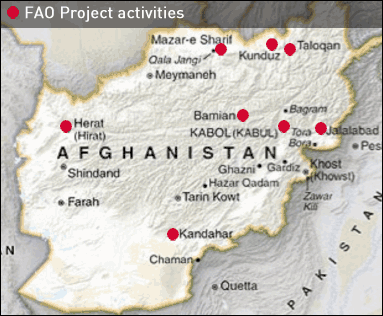Rehabilitating irrigation in Afghanistan
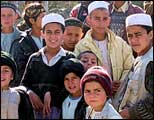 Water is the lifeblood for the people of Afghanistan, not just for living but also for the economy. The economy has traditionally been dominated by agriculture, which now accounts for over half the GDP (Gross Domestic Product) and employs 66% of Afghanistan's workforce. Decades of war have destroyed much of Afghanistan's irrigation and other water supply systems, which are vital for the agricultural economy.
Water is the lifeblood for the people of Afghanistan, not just for living but also for the economy. The economy has traditionally been dominated by agriculture, which now accounts for over half the GDP (Gross Domestic Product) and employs 66% of Afghanistan's workforce. Decades of war have destroyed much of Afghanistan's irrigation and other water supply systems, which are vital for the agricultural economy.
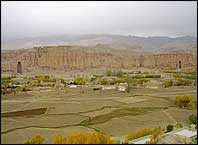 This has been complicated by the drought that Afghanistan has experienced in recent years. As an arid and semi arid country, irrigation is essential for food production - there can be no food security without water security. The United Nations Food and Agriculture Organisation has been playing a vital role in helping to rebuild Afghanistan's irrigation systems since 1989 with cross border projects which continue to this day.
This has been complicated by the drought that Afghanistan has experienced in recent years. As an arid and semi arid country, irrigation is essential for food production - there can be no food security without water security. The United Nations Food and Agriculture Organisation has been playing a vital role in helping to rebuild Afghanistan's irrigation systems since 1989 with cross border projects which continue to this day.
The nationwide Emergency Irrigation Rehabilitation Project (EIRP) started in June 2004, implemented by the Ministry of Energy and Water (MEW) with support from FAO and funded by the World Bank. With this project farmers and their families will benefit from improved, reliable and equitably distributed irrigation water which will lead to increased agricultural productivity, better income; improved food security and reduce the vulnerability of farmers to droughts. This will assist in reducing poverty in rural areas; accelerating the transition of the existing agricultural system; and laying the foundation for a dynamic rural economy.
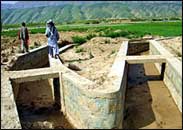 FAO irrigation activities in the project cover all the provinces of Afghanistan through seven regional offices in Kabul, Jalalabad, Kandahar, Herat, Kunduz, Mazar-e-Sharif and Bamyan. As of May 2008, 495,299 ha of agriculture lands are rehabilitated (against a target of 350,000ha) served by 493 completed schemes out of about 700 targeted schemes for rehabilitation. The project monitoring and evaluation recorded satisfactory changes have been achieved by the project, for instance the average yield has increased in irrigated areas by 24%, and an average increase in land value of 30,000 Afghanis/hectare. The average net returns per hectare of wheat production increased by an average of 38% but in some cases in Kabul it was as high as 104% increase. The significant increases in yield of wheat have contributed to substantial increases in rural household income, on farm employment and improved poverty alleviation.
FAO irrigation activities in the project cover all the provinces of Afghanistan through seven regional offices in Kabul, Jalalabad, Kandahar, Herat, Kunduz, Mazar-e-Sharif and Bamyan. As of May 2008, 495,299 ha of agriculture lands are rehabilitated (against a target of 350,000ha) served by 493 completed schemes out of about 700 targeted schemes for rehabilitation. The project monitoring and evaluation recorded satisfactory changes have been achieved by the project, for instance the average yield has increased in irrigated areas by 24%, and an average increase in land value of 30,000 Afghanis/hectare. The average net returns per hectare of wheat production increased by an average of 38% but in some cases in Kabul it was as high as 104% increase. The significant increases in yield of wheat have contributed to substantial increases in rural household income, on farm employment and improved poverty alleviation.
The provision of irrigation water also contributed to increased production of high-valued crops including barley, maize, rice, corn, vegetables, cotton, orchards and horticulture which has potential for foreign exchange earnings. Water disputes have been minimized. The project was able to address equity issues, farmers and water users now have substantial access to water due to emphasis on head works and primary and secondary canal works.
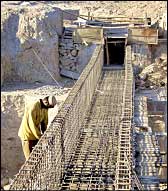 174 hydrological stations today are under installation across Afghanistan, the network of stations will measure rainfall, relative humidity, water level, water quality, temperature and sunshine.
174 hydrological stations today are under installation across Afghanistan, the network of stations will measure rainfall, relative humidity, water level, water quality, temperature and sunshine.
In the north of Afghanistan at the Kokcha river in Kunduz and Takhar Provinces FAO EIRP is completing a feasibility study for a Lower Kokcha Irrigation and Hydropower Project. Once completed, this project will result in water supplies for about a further 132,000ha of agricultural land.
In light of the success of this project and the huge benefits it continues to bring to ordinary Afghans, the World Bank has now agreed to allocate a further US$ 28Million with additional scope of work for the next two years in addition to the $75 million USD originally allocated. During the period, preparations for a follow on phase will be launched to target up-scaled irrigation rehabilitations, restoring uncompleted bulk water supply systems (like dams and reservoirs), installation and operation of hydro-meteorological networks; preparation of river basins water master plans in addition to capacity development and institutional strengthening. The World Bank also plans to allocate US$200mill for four years follow on phase in multi donors funding basis and inter-ministerial coordinated approach.